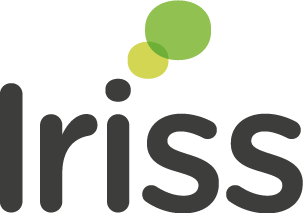Project planning is full of decisions to make. What partners do you need? What will success look like? How responsive can your plan be to new information? The list goes on; and it’s something we are really familiar with in our Iriss work. Despite familiarity, drawing a boundary around a project, and a project output, is not always easy - particularly in a piece of work like Voices and Visions, where participants have routinely shared detailed perspectives with us. At times, the possibilities of what we could explore, and what we might practicality create felt vast; the sign of an engaging topic area, but nonetheless tricky for us to refine.
But, you have to find a way to focus! From our pre-project work, we knew that third sector organisation (TSO) placements are highly valued, and highly valuable to the social work profession; and so we were sure from the start that we wanted to understand what works well, and build from a place of strength. As we’ve progressed, our idea took the shape of a supportive tool that focuses on the Third Sector experience of hosting a social work student placement. We refined our content ideas iteratively, in line with creating something that highlights good practice, and that showcases and unpacks what works well on TSO placements.
It was also important to us to create a resource that highlights levers for change that are accessible to third sector organisations; rather than point out challenges that exist outwith their sphere of influence. While the tool contains suggestions for the other parts of the student placement system, the focus is on how TSOs can learn from placements that are delivering good outcomes for both student and organisation. In this way, we hope the resource can be supportive and empowering, helping to improve or create new placements that are rich in learning opportunities for social work students.
We’re launching this resource on 29th April 2025 in Glasgow - find more information at the end of this blog!
Inevitably, setting this intention for the resource means that there are some points that we heard from participants that haven’t made it into the final tool. Had we produced a more typical report for example, that might have given space for some of the following points to be included. In our aim to create a supportive resource, we don’t want to lose some of the other information and nuances that exist in the TSO student placement world. So, we wanted to share some of what participants told us here.
Finances
Difficulties around budgets are a common refrain across the sector, and this is true of the student placement world too. Third sector organisations receive funding for hosting social work students, however this amount hasn’t risen while costs are increasing and can be difficult for TSOs to cover. Limitations on travel funds, as well as a change to how students receive funding for their placements - claiming back from SSSC directly, rather than from their university - was also foreseen to impact on students; though these changes hadn’t yet taken effect when participants talked about this with us. Additionally, the cost of living crisis has impacted students, and many need to work alongside their placement. A job alongside placement can be really demanding, particularly if students require to travel long distances to their placement.
Changes to Placement Format
Following the pandemic, online placements continue to be on offer, and in some cases this had been welcomed as a creative response to restrictions during social distancing measures. However, we also heard about the limitations this places on learning opportunities in placement; for example, having the opportunity to learn from colleagues. Placements have undergone other format changes that were felt to be limiting in some cases. For example, short placements used to be offered first, and were supportive in giving students a chance to get familiar with live working environments; begin to think about applying their learning to practice; and for universities to get to understand the learning needs of the students. Changes to funding has meant that the majority of social work courses no longer offer these types of short placements to students as a first step into a live learning environment.
Relationships
The relationship between TSO placement providers and universities is an important one, and we heard many examples of excellent relational working between the two, where each felt themselves to be an equal partner. However, there could be challenges in working together, with some TSOs feeling compelled at times to accept a student placement at late notice, or even when they had concerns about how they were going to meet that particular student’s needs. Universities on the other hand, have substantial numbers of people to match to both TSO and statutory placements, taking into consideration many different individual students’ circumstances - so it’s not always easy to give early notice. TSOs also shared that each university has different paperwork for them to complete, which can be a real challenge as it adds to their administrative workload.
Student Preparedness
Participants shared that there are varied levels of preparedness in the social work students coming to placement. Some felt there was a noticeable difference in recent years, compared to student placements prior to 2020. This fits with some of the broader social trends following the Covid-19 pandemic, and the impact on education, and young people more generally. We also know this can be a contentious topic to talk about, and all participants in this work were careful not to blame or chastise students. We heard that there’s a delicate balance between understanding and responding to the different context that social work students are training in; and individualising blame of being ‘unprepared’ onto students themselves.
Team Composition
There were varied perspectives on the impact or necessity of having a qualified social worker on the TSO team for a successful student placement. For some, having someone with direct experience of the profession was crucial to a good placement and being able to support students to meet their SiSWE outcomes. Other participants thought that having a skilled and supportive link worker and practice educator was enough for a really valuable placement experience. Relatedly, it was highlighted that a strong relationship between the practice educator and link worker is important in order for students to have a fruitful experience. Some felt this was in fact more important than having a social worker on the team. However, there was reflection that this can be a difficult relationship to get right sometimes, particularly when the practice educator is external to the organisation.
One of the reasons this project has been so interesting, is because of how many different topics people have touched upon; and how many different parts of the social work system placements can and do relate to. We could have taken this work in many directions; but we are confident in the final resource we’ve made, launching on 29th April. We hope that it’s been useful to hear about what didn’t make the final cut, and why; a look under the hood at what goes into our decision-making processes.
If you’re interested in this work, you can sign up to join us for the launch of the resource at the Social Hub in Glasgow, on 29th April 2025 9.30am-12.30pm: https://www.eventbrite.co.uk/e/new-resource-social-work-student-placements-in-third-sector-organisation-tickets-1317302941559?aff=oddtdtcreator
Biscuits, lunch and lots of time for discussion included! We’ll see you there.
There’s also an online lunchtime session the next day 30th April 2025 12.00-1.00 if you can’t make it along to the in-person session: https://www.eventbrite.co.uk/e/online-launch-social-work-student-placements-in-third-sector-organisation-tickets-1318476581949




